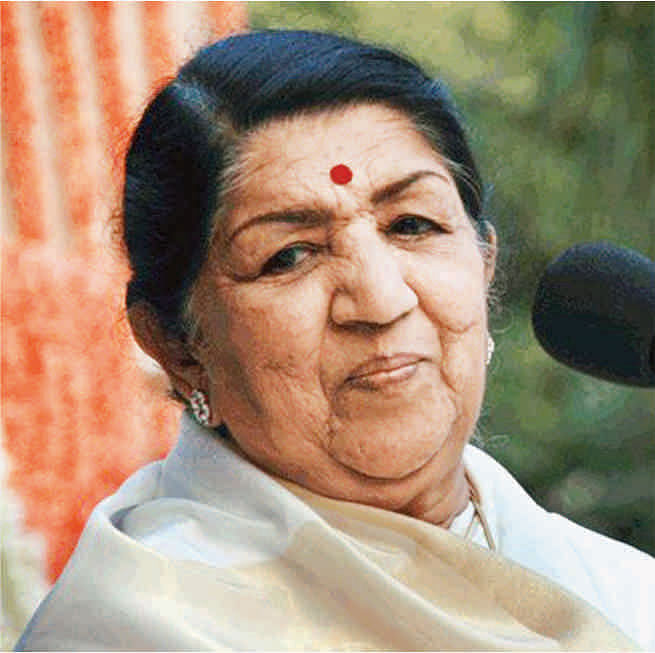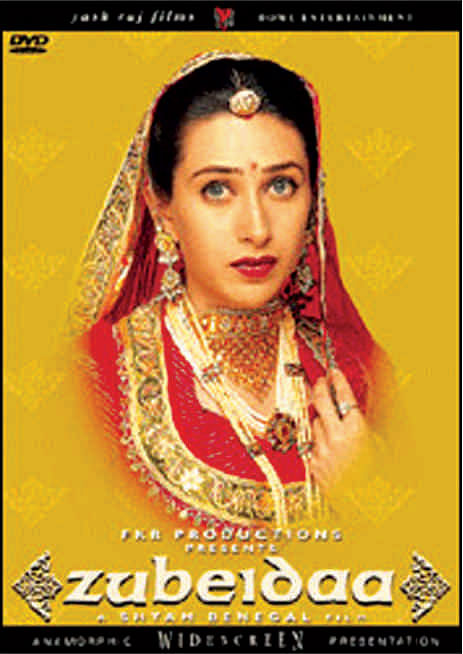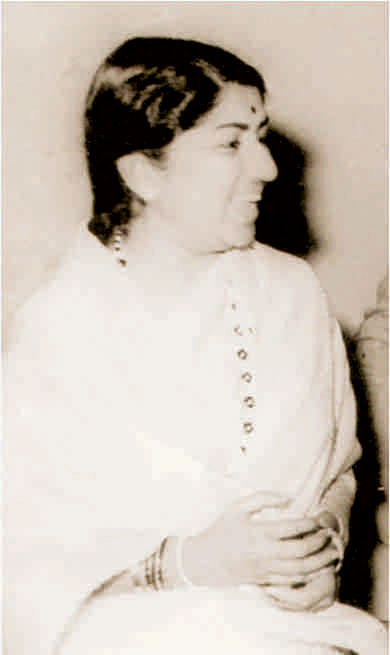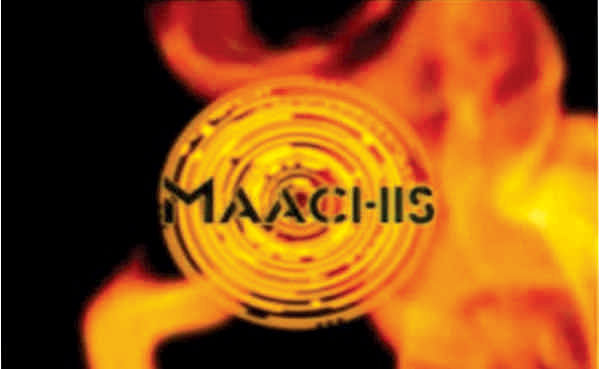A Tribute

September 28 is Lata Mangeshkar's 85th birthday. It is a cause for celebration. No other singer has entertained the subcontinentals for so long, in so many languages, through so many movies, and in an angelic voice that transcended human limitations. She has lent her voice to four generations of actresses – from Madhubala to Madhuri Dixit- and has been active for seven decades. She has overcome religious, linguistic, cultural and political barriers to garner as much popularity and affection in Bangladesh as in the rest of the subcontinent.
In 1948 Lata scheduled an audition with the music director of patriotic hit Shaheed, Ghulam Haider. Haider forgot about the appointment as Lata waited all day outside the studio. As he was heading home, Haider noticed Lata, felt remorse and took her inside the studio. Lata sang Noor Jehan's “Bulbul Mat Roe,” as Haider played the harmonium. Impressed, Haider introduced Lata to top producer Sashadhar Mukherjee, who dismissed Lata: “This girl with this thin voice will never make it!” Outraged, Haider made the prophetic remark: “Soon producers and directors will be falling on her feet, begging her to sing in their films!”
Lata appeared like a blazing meteor in 1949. She sang solos “Uthaye Ja Unke Sitam,” and “Tod Diya Dil Mera” (Naushad; Majrooh Sultanpuri) in Mehboob Khan's Andaz (1949). However, it was “Ayega Ayega Ayega Anewala” (Khemchand Prakash; Nakshab) in Kamal Amrohi's Mahal that sent Lata's popularity into the stratosphere. It is Lata's 7th favourite song. Lata comments: "The lip-syncing on screen by Madhubala added a special allure to the song."

Barsaat (1949) saw the debut of music director duo Shanker and Jaikishan (SJ), and featured one of the best soundtracks of Hindi cinema: “Jiya Beqarar Hai,” (SJ) “Bichre Hua Pardesi,”(Hasrat Jaipuri) and “Hawa Mein Udta Jaye Mera Laal Dopatta” (Ramesh Shastri) picturised on Nimmi.
In blockbuster Awara (1951), SJ scored another of Bollywood's all time great soundtracks: “Ghar Aaya Mera Pardesi” (based on a song by Egypt's Umm Kulthum), “Jab Se Balam Ghar Aaye,” and “Ek Bewafa Se Pyar Kiya,” (Hasrat Jaipuri, Shailendra).
Songs of Baiju Bawra (1952), based on Hindustani Ragas, included Lata's haunting rendition: “Bachpan Ki Mohabbat” (Naushad; Shakeel Badayuni) based on Rajasthani Maand.
SJ-scored Poonam (1952) featured exquisite songs “Aai Aai Raat Suhani,” “Jhume Jhume Dil Mera,” “O Bhole Balma” (Hasrat Jaipuri, Shailendra): picturised on Kamini Kaushal. Lata sang possibly her best Bhajan, “Ae Ri Main To Prem Diwani” in Nau Bahar (1952) (Roshan, Nakshab).
Hemanta Mukherjee enthralled the subcontinent with the snake charmers' “Been” music and Lata's lilting songs “Man Dole Mera Tan Dole,” and “Mera Dil Ye Pukare Aaja.” (Rajinder Krishan) in Nagin (1954).
Comilla-born and raised Sachin Dev Burman adopted the western beat for Lata's superb cabaret songs in Taxi Driver (1954): “Dil Se Milake Dil,” and “Dil Jale To Jale” (Sahir Ludhianvi).
Madan Mohan scored playful dance songs in Bhai Bhai (1956): “Is Duniya Mein Sab Chor” and (with Kishore) “Mera Naam Abdur Rahman” (Rajendra Krishan). Madhumati (1958) showcased “Aja Re Pardesi,” (Salil Choudhury; Shalilendra), Lata's 3rd favourite song, “for its lyrics, tune and acting.”

Heart-piercing “Dil Ka Khilona Hai Toot Gaya” (Vasant Desai; Bharat Vyas) in Goonj Uthi Shehnai (1959) was another of Lata's all time best. Superb 'Woh Chand Khila,” and “Tera Janaa” (SJ; Shailendra) from Anari completed Lata's sensational first decade.
Lata's impassioned rendition of “Tere Rahon Mein Khadi Hai” (Kalyanji Anadji; Qamar Jalalabadi) from Chhalia (1960) is the only Lata song to be picturised in a Pakistani movie, Jadoogar (1962).
Songs of “Dil Apna Aur Preet Parai (1960) are sublime: “Andaz Mera Mastana,” “Dil Apna Aur Preet Parai,” “Mera Dil Tera,” and “Sheeha-e-Dil Itna Na Uchhalo” (SJ, Shailendra and Hasrat Jaipuri) “Ajeeb Dastan Hai Yeh,” (adopted from Jim Reeves' 1956 hit “My lips are sealed”) is Lata's13th favourite.
Nine passionate Urdu songs adorned Mughal-e-Azam (1960) (Naushad, Shakeel Badayuni): “Mohabbat Ki Jhooti,” “Humein Kash Tum Se Mohabbat,” “Ye Dilke Lagi,” “Khuda Nigehban,” and Lata's 8th favorite, “Pyar Kiya to Darna Kya” (based on Darbari and Durga Ragas.) She explains: "I love the song's lyrics, music, choreography and the mood. Many rebellious emotions are conveyed through it."
Dilip Kumar produced and wrote the dacoit drama Gunga Jumna (1961), featuring exquisite songs in Bhojpuri dialect, “Do Hanson Ka Joda,” and “Dhundo Dhundo Re Sajna” (Naushad; Shakeel Badayuni) picturised on Vyjayanthimala.
“Allah Tero Naam,” Hum Dono, (1961).( Jaidev; Sahir Ludhianvi) is Lata's 9th favorite: "Perhaps the most melodious and all-encompassing prayer for humanity." “ Woh Bhooli Dastaan,” Sanjog (1961) (Madan Mohan; Rajinder Krishan) is 13th on Lata's list.
“Zara Si Aahat Hoti,” Haqeeqat, (1964)(Madan Mohan; Kaifi Azmi, Shabana Azmi's father) is Lata's 10th favorite: "Kaifi Saheb's lyrics are haunting.” “Is Duniya Mei Jina Hai Toh,” (SJ Hasrat Jaipuri) in Gumnaam (1965) is Lata's 20th favouite: "I love this breezy carefree song picturised on Helen.”
Lata considers “Tu Jahan Jahan Chalega” from Mere Saya (1966) (Madan Mohan; Raja Mehdi Ali Khan”) as her most favourite song, “about yearning for a loved one that you have lost.” “Lag Jaa Gale” (Madan Mohan; Raja Mehdi Ali Khan) in Woh Kaun Thi (1964) picturised on emotive Sadhana is her 2nd favourite.
Lata rates Suchitra Sen-lip synced “Rahe Na Rahe Hum“ (Mamta, 1966) (Roshan; Majrooh Sultanpuri) as her 4th favourite because “the music and lyrics made for a great composition.”
“Ja Re Ud Jaare Panchi” from Maya (1961) is 5th. However, Bengalis know that the song is the Hindi version of Salil-Lata's Bengali song, “Ja Re Ude Jare Paakhi.” Similarly, Lata's 6th pick, “O Sajna Barkha Bahar Aayi” from Parakh (1960) is the Hindi version of Lata-Salil's Bengali hit, “Na Jeona,” as is her 18th, “O Beqarar Dil,” from Kohra (1964) which is the Hindi version of Hemanta's Bengali hit “O Nodi Re.”
There were hits galore in Guide (1965), “Aaj Phir Jeene Ki Tamanna Hai,”(S.D. Burman,; Shailendra) picturised on Waheeda Rehman; Aakhri Khat (1966), showcasing another enchanting song, “Baharo Mera Jevan Bhi Savaro” (Khayyam; Kaifi Azmi); and “Sawan Ki Mahina” (with Mukesh) in Milan (1967), (Laxmikant-Pyrelal (LP), Anand Bakshi.))

The 70s kicked off with Kamal Amrrohi's (Meena Kumari's husband) Pakeezah (1972): “Chalte Chalte,” (Kaifi Azmi) “Inhi Logo Ne,” and “Thaare Rahiyo” (Ghulam Mohammad/Naushad; Majrooh Sultanpuri), Lata's 12th favourite: "The Rajasthani folk tune attached to the song adds a special charm to it.”
“Bada Natkhat Hai” (RD Burman; Anand Bakshi) in Amar Prem (1972) is Lata's 17th choice: "It brings out a mother's love for her son.” “Tere Bina Zindagi,” (with Kishore), Aandhi (1975) (RD Burman; Gulzar) is 15th on Lata's list: "Stunning picturisation ( on Suchitra-Sanjeev) and such appealing lyrics.“
Romantic “Panna Ki Tamanna” (with Kishore) (RD Burman; Anand Bakshi) picturised on Zeenat Aman in Heera Panna (1973), “Ab To Hai Tumse” in Abhimaan (1973) (SD Burman, Majrooh Sultanpuri) picturised on Jaya Bhaduri, an excellent duet with Rafi, “Aadmi Musafir Hai” in Apnapan (1977) (LP, Anand Bakhshi), and “Satyam Shivam Sundaram,” (LP, Narendra Sharma), a jewel from the movie of the same name (1978) closed the 70s.
“Yeh kahaan aa gaye hum,” Silsila, (1981) (Shiv-Hari; Javed Akhtar, Shabana Azmi's husband) is Lata's 19th favourite: "Javed Saheb felt the line, 'Huyi aur bhi mulayam, meri shyam dhalte dhalte,' couldn't be sung more meaningfully by any singer in the world but me.”
“Dikhayee Diyen,” (Khayyam, Mir Taqi Mir) in Bazaar (1982) is 16th: "This is one ghazal by Mir that is closest to my heart." “Ae Dil-e-Nadaan” from Razia Sultana (1983) (Khayyam; Jan Nisar Akhtar) is 11th: "I loved the way it was explained to me by Kamal Amrohi. I just closed my eyes, rendered it and conveyed the emotions.”
Lata's brother, Hridayanath Mangeshkar scored the hit “Yaara Seeli Seeli” (Gulzar) in Lekin (1991). “Didi Tera Devar Deewana” (Raamlaxmam; Dev Kohli), picturised on Madhuri Dixit and Salman Khan, is Lata's mega hit in the blockbuster Hum Aapke Hain Koun” (1994). “Jiya Jale” from Mani Ratnam's Dil Se (1998) (A. R. Rahman, Gulzar), and the devotional “O Paalanhaare” in Lagaan (2000) (A. R. Rahman, Javed Akhtar) closed the millennium.
“Akaash Prodeep Jawle,” (Kotha: Pobitra Mitra; Shur: Satinath Mukherjee) was Lata's first Bengali song (1956). Hemanta Mukherjee taught Lata Rabindra Sangeet and had her sing Hindi and Bengali songs in “Shesh Parichoy” (1957). Devotional “Gopi Jono Mono Choro,” and “Koto Je Kotha Chhilo” set the tone for an avalanche of hits like “Nijhumo Shondhaye,” (Hemanta, Pulak Bannerjee), and “Aashar Shrabon,” (Hemanta, Mukul Dutt) in Monihar (1965).
Salil Chowdhury broke all rules of composition to make Lata sing some of her toughest songs. The result was delectable! Who can forget the sudden change of scale in “O Banshi Hai,” or any of the following that flutters the heart of every Bangali: up tempo “Saath Bhai Chompa,” heart-rendering “Naa Jeo Naa,” “Ja Re Ure Ja Re Paakhi,” “Ooo Polash, Ooo Shimul,” “Ogo Aar Kichu To Nai,” and “O Mor Moina Go.”
Lata also sang the technically challenging, “Rangeela Banshite Ke Daake,” (Bhupen Hazarika; Pulak Bannerjee) and the melodically exquisite, “Aamar Maloti Lata,” (RD Burman). Lata's songs would occupy at least seven places out of ten all time best Bangla songs!
For Lata Mangeskhar “Prem Aakbare Aeshae Chhilo Nirobe” (Hemanta, Gouriprasanna Majumder, 1958) in the person of Madan Mohan. However, Lata was already married - to music. Professionally Lata was unrivaled; her younger sister Asha came closest. Versatile Asha had her own niche and was a superstar in her own right.
Lata's voice is like a musical instrument. When others reach high notes, their voice imperfections become manifest; Lata's voice remains perfect. Even while crooning nasally, her voice maintains total integrity. Except for Mohd. Rafi, the vocal imperfections of every other male singer who sang duets with Lata were apparent.
Singers act with their voice, expressing the gamut of emotions from pathos to ecstasy. No one encapsulated the moment better than Lata. She was just as apt at play backing for a child actor, as in “Phoolon Ka Taron Ka” as for adults.
Lata worked tirelessly to achieve perfection – not only taking music lessons (originally from Ustad Amanat Ali Khan), but also language lessons. One could detect her native Marathi accent in some of her earliest songs, such as Punjabi, “Laara Lappa” (with Durrani and Rafi) in Ek Thi Ladki (1949)” (Vinod; Aziz Kashmiri). She took lessons in Urdu to ensure perfect pronunciation.
Lata Mangeshkar has enriched the cultural lives of billions of people in the subcontinent for seventy years. Her melody calmed nerves and nurtured the soul. She was an enchanting voice of perfection in an imperfect world. She is a phenomenon that comes once in a millennium. Soon graduate students will be writing PhD dissertations on “Lata Mangeshkar Gharana.” Lata is simply the best vocalist that ever lived! Bangladesh would honour itself by bestowing Bangladesh's highest civilian award on Lata Mangeshkar. Happy Birthday Lataji!
Dr. Fakhruddin Ahmed is a Rhodes Scholar

 For all latest news, follow The Daily Star's Google News channel.
For all latest news, follow The Daily Star's Google News channel. 



Comments